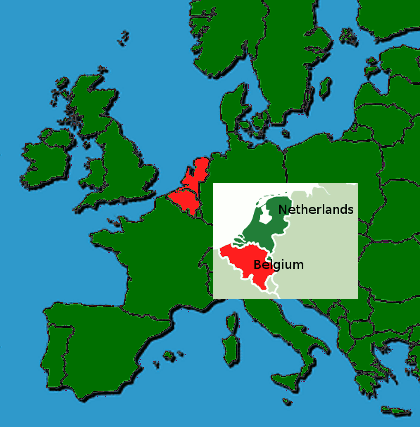
Circle the area on this map

C. The Low Countries include the Netherlands, Belgium, and its tiny neighbor Luxembourg. The area includes the coastal region and the low-lying delta of the Rhine, Meuse, Scheldt, and Ems rivers where much of the land is at or below sea level.
D. The North Sea is the part of the Atlantic Ocean located between Great Britain, Scandinavia, Germany, the Netherlands, Belgium, and France.
B. French is the primary language about a third of Belgians, primarily in Wallonia in the southern half of the country. Languages like Dutch, German, English and the Scandinavian tongues are Germanic, while languages like French, Spanish and Italian are derived from Latin. Belgium straddles the divide between Latin and Germanic Europe.
D. With half its land below or less than a meter above sea level, the Netherlands is raising its dikes to protect against sea levels which are expected to rise more than a meter. It is moving people away from rivers expected to swell from heavier rainfall. And, it is developing potatoes, carrots, strawberries and lettuce that can grow in saltier water.